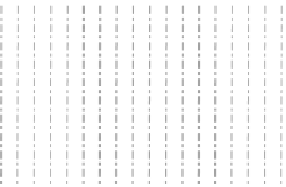Environmental Engineering Reference
In-Depth Information
because random errors in soil testing and spatial variability of geological properties were
assumed to be of the operative soil properties themselves.
12.3.3 Slope stability analysis
Slope stability analysis was the mainstay of this period of geotechnical reliability research,
and to some extent remains so today. The slope stability problem is well formulated, relies
on a limited number of uncertain inputs, and has a simple output, namely the factor of
safety against instability. Among the early contributors to this work were Wu and Kraft
(1970), Matsuo (1976), Alonzo (1976), Vanmarcke (1977), and Harr (1987).
Much of the early work on slope reliability simply replaced deterministic soil-engineering
parameters with corresponding probability distributions and generated probability distribu-
tions of margin of safety or factor of safety against instability as output
(
Figure 12.3
)
. The
probability of failure of the slope was taken to be the probability of
MS
≤ 0 or
FS
≤ 1 (
Figure
nonparametric
reliability index
(β), and this caught on across geotechnical practice:
EFS
SD FS
() .
()
−
10
EMS
SD MS
(
)
−
00
.
β=
=
(12.1)
(
)
in which β is the reliability index,
E
(
.
) is the expected value, and
SD
(
.
) is the standard devia-
tion. The reliability index measures the distance from the best estimate of a performance
index to its limiting state (failure) in units of the standard deviation.
The first-order second-moment (FOSM) reliability index proved to be a highly useful
index property even though it had limitations. The most serious limitation was that the
FOSM reliability index is not invariant to changes in the definition of the index property
and the limiting condition. For example, the reliability index expressed in
MS
may and often
does differ from that expressed in
FS
. The alternative Hasofer-Lind measure of reliability
largely replaced the FOSM measure in structural engineering by about 1980 (Hasofer and
Lind 1974), but Cornell's FOSM β remains common in soil mechanics applications—with
their less exact models and greater parameter uncertainty—even currently.
Critical wedge stage-2
Berm 2
Berm 1
Marine clay
Marine clay
Limit of vertical drains
Till
Figure 12.3
A two-dimensional slope reliability analysis typical of ca. the 1980s practice. James Bay Dikes
of HydroQuébec.



















Search WWH ::

Custom Search